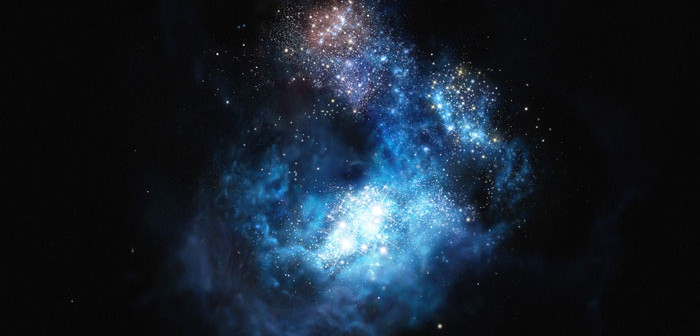Elusive Population
Population III stars — the theoretical generation of extremely metal-poor stars that should have been formed in the early universe before metals existed — have been conspicuously absent in observations. But a team led by David Sobral (Institute of Astrophysics and Space Sciences, University of Lisbon, and Leiden Observatory) may have changed this paradigm with their recent detection of an extremely bright galaxy in the early universe.
The team’s broad survey of distant galaxies using ESO’s Very Large Telescope provides a glimpse of the universe as it was only 800 million years after the Big Bang. The survey uncovered several unusually bright galaxies — including the brightest galaxy ever seen at this distance, an important discovery by itself.
But further scrutiny of this galaxy, named CR7, produced an even more exciting find: a bright pocket of the galaxy contained no sign of any metals. Follow-up with other telescopes confirmed this initial detection.
Formation Waves
Sobral and his team postulate that we are observing this galaxy at just the right time to have caught a cluster of Population III stars — the bright, metal-free region of the galaxy — at the end of a wave of early star formation. The observations of CR7 also suggest the presence of regular stars in clumps around the metal-free pocket. These older, surrounding clusters may have formed stars first, helping to ionize a local bubble in the galaxy and allowing us to now observe the light from CR7.
It was previously thought that Population III stars might only be found in small, dim galaxies, making them impossible for us to detect. But CR7 provides an interesting alternative: this galaxy is bright, and the candidate Population III stars are surrounded by clusters of normal stars. This suggests that these first-generation stars might in fact be easier to detect than was originally thought.
Additional follow-up observations with other telescopes will help to confirm the identity of these stars. In particular, the James Webb Space Telescope is expected to further advance the pursuit of the earliest galaxies and stars in the universe.
Citation
David Sobral et al. 2015 ApJ 808 139 doi:10.1088/0004-637X/808/2/139

